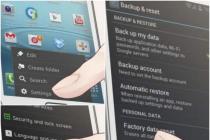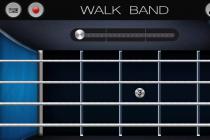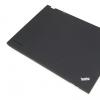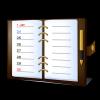Very often, cyclists are faced with the problem of organizing communication between groups. This is especially true in places with no signal. mobile communications... It is then that they come to the aid of the radio. Thanks to them, you can easily warn the lagging group about the danger on the route, ensure coordination.
In addition, walkie-talkies for cyclists usually have convenient attachments for attaching to backpacks or vest pockets. It is very convenient for driving. In addition, using a headset, you can not be distracted by negotiations while driving, not to find the signal call button, dialing a number. All the necessary settings must be made once, before starting the trip.
What is the best walkie-talkie for cyclists?

The choice of this equipment must be considered carefully. Also, it will not be superfluous to understand some theoretical part. This applies, to a greater extent, to beginners - professionals have known everything for a long time.
So, initially, before buying a walkie-talkie, you need to decide where you will mainly use it.
There can be three options for an answer:
- Outside the city.
- Within the city.
- Mixed type.
Suburban conditions.
Here you can advise the VHF bands (136-174 MHz) - it is high-frequency. These radios can be used on highways and off-road, where there are small obstacles for the signal. In addition, such radios are still not afraid of electromagnetic disturbance and other interference. Quite good options Kenwood TH-F5 Turbo VHF, Kenwood TK-F8 VHF, Kenwood TH-K2AT
If your walk is on a deaf, wooded route, there is a reason to use radios that support the CBS range. Even despite the fact that they are mostly used by truckers and taxi drivers. CB radios operate at a frequency of 27 MHz. The wavelength is about 11 meters. This means that it can easily bypass an obstacle with a diameter of more than 6 meters. With her, no thicket is afraid. The only drawback is that on terrain with interference in the air, they can provide poor-quality communication. Intek H-520 Plus, Alan 42 can be quite good portable radios operating in the CB band.
Urban conditions.
If you are sure that you will only ride within the city limits, then you need radios that work in the ultra-high frequency range of UHF. It can be both official and amateur - most often, after all, the second. The wavelength is approximately 70 centimeters. Frequencies - from 420 to 473 MHz.
This range includes two unlicensed permitted ranges:
- LPD - range, channel frequency - from 433.075 MHz to 434.775 MHz. The total number of fixed channels is 69.
- PMR-band, channel frequency - from 446.00625 MHz to 446.09375 MHz. Previously, it was a European communication standard that did not require a license; now it is allowed in Russia. You can safely use it in Russia and Europe!
Thanks to this, you can have a fairly high-quality connection, which is not afraid of any interference. With sufficient radio power, you can have a good communication range. If you decide to use walkie-talkies in urban conditions, then Ajetrays AJ-460, Ajetrays AJ-446, Ajetrays AJ-450, Midland GXT 1000, Midland GXT 1050, Midland GXT 650, Kenwood TH-K4AT, Kenwood TK-433 / 446, etc.
Mixed type.
If you don't know exactly where you are going to ride, or your routes are too differentiated, buying a dual-band radios is a great option. As a rule, such devices can operate in the UHF and VHF bands. In this group, the Kenwood TK-UVF10 and Kenwood TK-UV3R walkie-talkies can be good options.
What other requirements might there be?
Everything is quite simple and logical here. Walkie-talkies for cyclists must have the following parameters:
- Compactness - small size and weight: very important parameters for cyclists.
- Strength - for this, walkie-talkies must have powerful body, which is protected from external influences.
- Ergonomics - user-friendly display, key layout, additional controls.
- Ability to work with additional equipment.
Helpful article? Yes ( 11 ) / No ( 6 )
Peter Bridger
What headsets / radios are there for cycling communication?
I ride my bike to work, sometimes I share the ride with a colleague. The problem is, the wind and the distance between the bikes make it very difficult to hear what the other person is saying.
It would be great to have some kind of radiotelephone headset for communicating while driving. For example, one solution might be a Bluetooth headset, like those used with mobile phones, combined with some kind of mobile phone or radio.
The best I could find were wired devices designed for two people sharing one motorcycle. The radios I found were again for motorcycles and also seemed very expensive.
Are there such units for cyclists?
Neil Fein
Not quite the correct answer, but I often set up a set of signals for touring partners: one bell on the bell means "I am here", and please call back, and several times frantically - "let's stop here." I suspect you will not find a bike headset and the challenge will be to find a headset suitable for a walkie-talkie that will play well with both a bike helmet and and with the sound of the wind. Perhaps something designed for boating might work, or something military grade?
Freiheit ♦
@neilfein: The main thing to look for in a microphone is "bone conduction." They hear your voice through their jaw and are much less likely to pick up wind noise.
Daniel R Hicks
I suspect the motorcycle gear is the closest you'll find. Unfortunately, it is not only expensive, but also heavier and cumbersome than you would like.
OMG pony
@freiheit: Throat mics are another option and are easy to find through paintball sources. The only problem I am facing is getting real throat microphones, where you only need to whisper to communicate.
Answers
zigdon
A few years ago, when my wife and I started skating together, we got a couple of cheap two-way radios with headsets that included VOX. This allowed us to speak even when we were not traveling side by side. And since we weren't trying to speak from a mile away, it didn't matter how cheap the radios were.
Of course, this requires that you coordinate with your colleague, both radio stations are tuned and tuned to the same frequency.
Brian Knoblauch
FRS radios are fairly inexpensive, most of them seem to have VOX, and will be fine with the bill (since it's designed for this particular type of use). Bluetooth can be made to work too, but it is not really designed for that. Also, if you need more radius action, you can buy a FRS / GMRS combo radio, get an FCC GMRS license, and talk over much longer distances (for example, if you are at a large event and are torn apart).
Neil Fein
What is VOX? Is this a trademark?
zigdon
The BK-1 product line was acquired by Terrano, LCC. and will be sold under the Terrano-X brand from today.
Philip T
There is a new product on the market that has just been released by VERTIX. it wireless system specially designed for cyclists and equipped with a remote control remote control on the steering wheel. The distance between two riders is 500m and you can have up to 4 riders in a group with a range between the first and last rider up to 1.5km! time autonomous work is 10 hours. There is a filtering of wind noise, as well as a choke prevention function - your friends cannot hear you breathing heavily, but only when you are talking!
nick3216
I can recommend Motorola T5522 radios with VOX (although PTT is more reliable). Used to coordinate them in 24 hour races. It has now been discontinued, but systems like this can be purchased for around £ 25 or so.
Rob T.
They are a little expensive, but the solution my wife has been using for several years is the 2.4GHz Eartec Simultalk radios. Roughly $ 300 per pair. The benefits are small, lightweight, simple, and very user-friendly, as it's like talking on the phone.
The downside, apart from cost, is that adding a third rider is problematic.
FRS / GMRS radios with VOX and a good headset to fit a bike helmet, must be a more economical solution, but I suspect you might have to try a couple of combinations of radios and headsets until you get a setup that works for VOX. and bicycle helmets. Radio with VOX settings it would be highly desirable.
Criggie
This is a rough tough spot on the bike. I used cheap PRS radios (UHF frequency) because they can be found for $ 30-40, they run on regular AA batteries, and headphone / microphone kits cost $ 10 each. I attach the radio to the collar so that it is high enough for good signal, or on my belt and use the PTT microphone on the collar.
The range is about a kilometer, more if its an open area like a road. VOX is a setting, but I found it too sensitive. They are neither small nor lightweight, but for the price, I won't cry to break one.
Finally - they are a standard transceiver, not a proprietary pair, where one breaks and the other becomes useless.
Chef Flambe
Bluetooth technology is designed for use over short distances. Less than 10 meters if there is a clear line of sight. I would suggest that you purchase a retail two way radio station (FRS) and a headset with microphone.
Imagine the situation that you are going on a bike trip. On the way, you will come across dense forests, hills, sparsely populated areas, in a word, places where there may be problems with work mobile phone... What to do?
In cases where it is necessary to ensure communication between all members of the group, athletes, as a rule, use cycling and bicycle accessories.
Veloration- the thing is very convenient and extremely useful in such situations. The device has special devices that secure it in a secure position while driving. A bonus to walkie-talkies can be accessories for the cyclist, for example, a headset that allows you to control the walkie-talkie when a person is unable to hold the device in their hands
Imagine that you are already ready to become the owner veloration, but now you have a dilemma: which model to choose?
Probably, you shouldn't tell you (you already know everything) that the acquisition of equipment must be approached seriously and responsibly. After all good device can become a reliable "friend" for many years.
Let's first define your route, during the passage of which, you will use veloration.
We have three acceptable options, these are: a bike ride around the city, out of town, or a mixed type (when you will ride both there and there).
Now we will analyze each option separately.
So let's say you need velorations for travel within cities. In this case, your choice should be limited to models of radio stations operating in the UHF band (420-473 MHz). These radios have a wavelength of about 70 cm.
The frequency range of UHF is considered "urban" and shows its best qualities in dense urban areas. It consists of bands such as LPD (433 MHz) and PMR (446 MHz), which are legal and do not require licenses.
Devices operating at such frequencies can be safely used in Moscow, St. Petersburg and other regions of Russia.
If you have already decided that you will be cycling in the city and admiring urban landscapes, radio stations with this range are excellent for you. You can find a suitable model on our website.
Now consider a situation in which you are a lover of off-road or desert terrain located outside the city.
In case you will travel in not too distant places (where there are no large obstacles for the signal), you will find it useful walkie-talkies for cyclists, perfectly working in water of the most versatile bands - VHF (136-174 MHz). But if your path lies through a dense forest, choose a device with a "civilian range" - CBS. The wavelength of radio stations operating at this frequency is about 11 meters. This means that such a station will be able to pick up the signal, despite an obstacle with a diameter of more than 6 meters.
And the last option is mixed when you want to ride both in the city and beyond, so you plan to use the radio station in either case. Then choose dual-band radio stations operating in the UHF and VHF bands.
Here's a quick guide. But, there are still a couple very important points, which are worth considering when you decide on the territorial aspects.
remember, that velorations should be compact, because when moving, the size of the devices plays an important role. Secondly, walkie-talkies must meet quality standards that characterize their reliability. And thirdly, make sure that your model has the ability to connect additional equipment, for example, headset who will not take up their hands, accumulators increased capacity to help you stay connected longer, and antennas, to amplify the signal.
You can find the perfect one for yourself and your friends in our online store. We will be able to please and pleasantly surprise you not only with a really good choice, but also with the cost of goods.
Hardly anyone would deny the importance of being connected along the route. Not only communication with the "mainland", which is more often organized by means of cell or satellite phones, but also communication between the participants of the trip. This connection becomes especially relevant in cycling for a group of 5 or more people.
In such a group, the guide often does not see the follower. And he learns that someone has something punctured or broken only by the absence of a part of the group at the next stop. If the group passes the route with an escort car, it is very useful to know where this car and our things are now.
Weight restrictions allow bike travelers to use only small radios. You can put something more powerful in the car, but this is not often used, because the uniformity of the radio models is lost. And in the event of a breakdown of one of the radios, it will not work to insure the radio from the car.
The requirement for compactness and light weight of the radios limits them to the VHF and UHF ranges, that is, to the frequency ranges of 140 and 430 MHz of the amateur bands. For these ranges and compact models, a lot is produced, and the length of the antennas is acceptable.
For pedestrian routes, you can use both low-power models of the LPD and PMR classes, and models that send up to 5W to the antenna.


But the cycling group moves faster and "stretches" over considerable distances along the route. Therefore, 0.01 - 0.1W of LPD or PMR radio power is often not enough. The legal use of more powerful radios requires their registration, but greatly expands the possibility of communication.
For many years we have been using walkie-talkies manufactured by the Japanese company Yaesu on our routes. At first, these were the VX-5R models, and the last 3 years - the VX-6R. Nice, reliable cars. Power - maximum for mobile radios(5W), full water resistance, secure attachment of the headset to the radio on the thread. It will not be dropped by chance.
There are also troubles:
A very inconvenient clip on the walkie-talkie to hang it on a belt. We don't use it at all - we put the radio in our pocket.
Not very light weight (slightly less than 300g). It is not always convenient when she dangles on her back in a pocket of a bike.
Expensive batteries. More than 2000 rubles per piece. Yes, they are enough for 3-4 days "from dawn to dusk". But anyway.
And we began to look for an alternative. In the same Yaesu products. The closest was the miniature VX-3R.
The station is small, 2 times smaller than the VX-6R. And it weighs 130g. For transmission of 2 ranges - 144 and 430MHz.
The maximum power, however, is also less - up to 3W at 144 MHz, up to 2W at 430MHz.
A fairly short standard antenna. This radio does not add sensitivity.
Batteries are suitable for it from third party manufacturers are not expensive. And relatives are in the region of 600 rubles. And the antenna, if necessary, can be replaced with something more serious. Some kind of quarter-wave. If for the 430 range, then you can use the 17 cm Comet SMA-703.

We bought one such walkie-talkie for testing and went on the route. One VX-6R is with the boss, one is in the car, and I have a trial VX-3R.
We traveled like this for a week, arrived in Moscow happy and rested, after which I returned the radio to the seller. Due to one single problem - the headset.
Headset. as you know, this is an earphone with a microphone and a call button. Without it, riding a bike with a walkie-talkie is problematic. The radio is in the back pocket of the shirt, the microphone is attached to the collar of the shirt, the earpiece is in the ear.
And now someone had to wait for someone to figure out that the place of insertion of this headset into the walkie-talkie should be made in the form of the letter G (see photo).

As a result, the headset just "snaps out" from the socket at the radio, which is in the pocket. At the same time, the microphone and earpiece of the headset no longer work, and the speaker and microphone built into the radio do not work yet. As a result, you may be shouted that something has happened from behind. You won't hear anything.
For the first releases of this walkie-talkie of the year, after 2 operations, some segments of the LCD screen stopped working. It seems to be a trifle, but it becomes difficult to understand what frequency the radio is tuned to. The screens change to service center for not very noticeable money, and after that they live without problems.
The headsets for these radios have a weak point - the microphone assembly. Either the cables fall out of it, or the plastic housing of the microphone falls apart. Headsets for the walkie-talkie are only suitable for "relatives", so either you have to buy new ones, or fix them with glue and electrical tape.
Sakharov Alexander














